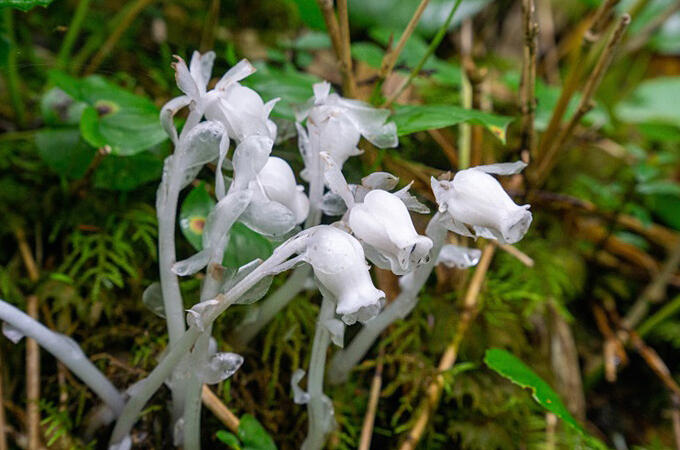A research group consisting of Professor Kenji Suetsugu of the Graduate School of Science at Kobe University, Mr. Osamu Yokoyama of the Hokkaido University Museum, and Associate Professor Shumpei Kitamura of the Department of Environmental Science, Faculty of Bioresources and Environmental Sciences at Ishikawa Prefectural University, has revealed that seeds of Monotropastrum humile, a non-photosynthetic plant, are dispersed after being eaten by woodlice and earwigs. It was previously thought that seeds could not be carried by animals as small as these because seeds will not go through their digestive tract. This discovery has established a new record of the world's smallest seed disperser. This is a crucial achievement in considering the hitherto overlooked role of small animals as seed dispersers within the ecosystem. The findings were published in Plant, People, Planet.

The seeds of a variety of plants are carried to places where they cannot reach on their own by being eaten along with fruit pulp by animals, such as birds and mammals, and excreted without being digested. The dispersers that serve this role are often birds and mammals, and invertebrates such as insects are rarely involved. As an exception, the ant is an invertebrate well-known as a seed dispersal agent; however, ants transport seeds by grabbing them in their mandibles instead of excreting them in feces.
M. humile (silver dragon plant), also known as yuureitake (ghost-like mushroom) or crystal orchid, owing to its appearance, is a rare plant whose seeds have been known to be carried by passing through the digestive tracts of camel crickets and cockroaches. When the fruits are ripe, the stem of M. humile plant collapses, and thus even small animals walking around on the ground surface can eat the fruits. As a result of this characteristic, invertebrates other than camel crickets and cockroaches could also contribute as seed dispersers, but the full picture was unclear.
The research group studied seed dispersers in a M. humile population in a cockroach-free area in Hokkaido. Specifically, fruiting individuals were photographed with an interval camera for 276.75 hours. The resulting 9,291 photographs were used to observe the behavior of animals that came to eat the fruits. As a result, in addition to the camel crickets already known to be seed dispersers, woodlice and earwigs (Eparchus yezoensis and Anechura harmandi) came to eat the fruit over 100 times each. If these invertebrates are seed dispersers, the feces excreted after eating M. humile seeds should contain viable seeds.
Therefore, the group brought back the following fruit consumers and M. humile fruits to the laboratory and conducted a feeding experiment: Diestrammena brunneri (a species of camel cricket), woodlice, and A. harmandi. These invertebrates were reared on a mixture of M. humile pulp and seeds, and the collected feces were observed under a stereo microscope to determine if seeds were present. Furthermore, TTC staining was performed to determine if the seeds in the feces were viable. The results of this showed that the feces of these invertebrates contained intact M. humile seeds, and that the seeds in the feces were viable. From this, woodlice and earwigs as well as camel crickets, were demonstrated to be seed dispersers of M. humile.
The smallest animal reported to discharge seeds in their feces was Blattella nipponica, which has also been reported as a seed dispersal agent of M. humile, measuring 11 to 13 mm long and about 5 mm wide. Of the seed dispersers identified in this study, woodlice (8-11 mm long and about 5 mm wide) are a new world record for the smallest seed dispersal agent. A. harmandi (11-16 mm long and approximately 3 mm wide) is slightly larger than B. nipponica and woodlice but may be the world's lightest seed disperser because its body width is narrower. The findings of this study highlight that seed dispersers are much more diverse than previously thought. Moreover, the findings are also of significance in that the underappreciated role of small animals in the ecosystem was illustrated.
Journal Information
Publication: Plants, People, Planet
Title: Earwigs and woodlice as some of the world's smallest internal seed dispersal agents: Insights from the ecology of Monotropastrum humile (Ericaceae)
DOI: 10.1002/ppp3.10519
This article has been translated by JST with permission from The Science News Ltd. (https://sci-news.co.jp/). Unauthorized reproduction of the article and photographs is prohibited.




